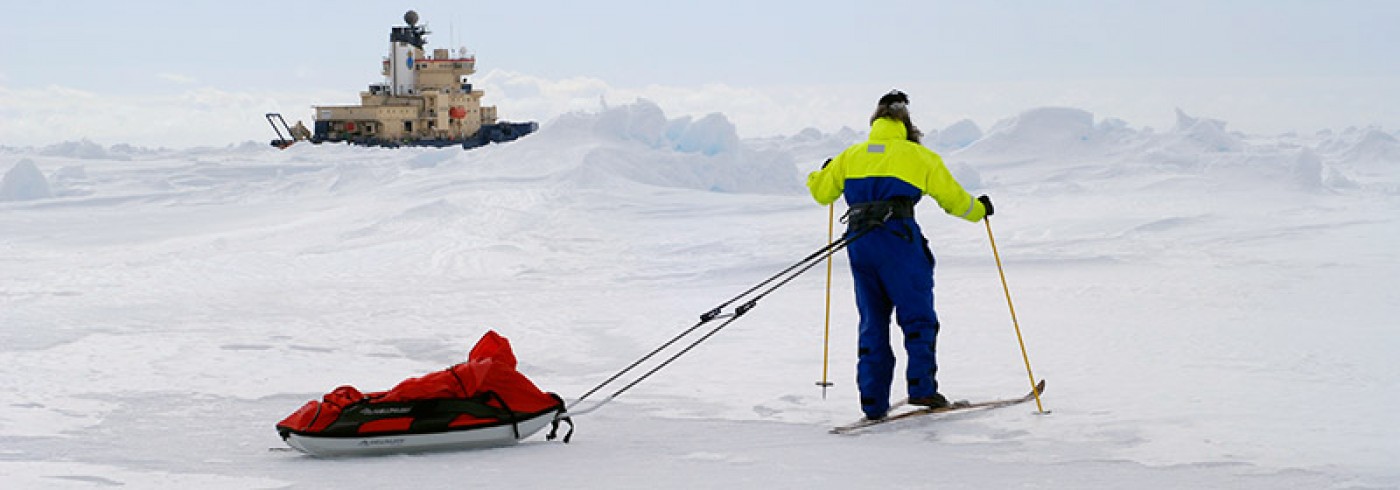Interrelated biogeochemical cycles of halocarbons and mercury
26 November 2010 - 17 January 2011This project aims to determine the importance of certain greenhouse gases (i.e., halocarbons) and mercury for chemical and biological exchange processes in the cryosphere and the marine environment, with a focus on climate change in polar regions and its feedback mechanisms. Specifically, the project aims to quantitatively investigate the mechanisms controlling the temporal and spatial variability of the processes driving the fluxes of halocarbons and mercury in the climatically sensitive polar ocean. The exchange of species (e.g. volatile halogenated organic compounds and mercury) among the sea–atmosphere–sea ice–snow is studied, as are the mechanisms controlling this exchange.
Throughout the cruise we sampled:
- halocarbons and dissolved gaseous mercury in surface sea water (32 stations)
- halocarbons, mercury, and ozone in air
- ozone and airborne gaseous mercury all the way from Sweden to McMurdo and back again.
At the ice stations we sampled:
- ice cores, surface sea water, snow, and brine for the determination of halocarbons
- flux chambers to measure the flux of halocarbons over the sea–ice interface (three 24-h stations)
This cruise allowed us to make inter-annual comparisons with results from cruises in 2007/08 and 2008/09 regarding halocarbon fluxes in the Amundsen and Ross seas and the diffusion of halocarbons through sea ice. These results have been used to calculate the actual flux of halocarbons from sea ice to the overlying air. We conclude from these calculations that the sea ice is the largest contributor to the load of organohalogens in air.
The cruise also let us make pioneering measurements of gaseous elemental mercuryconcentrations in ice cores in the study area. We concluded that the sea ice is a potent reducer of dissolved divalent mercury species, transforming them into gaseous species emitted into the atmosphere. Gaseous mercury species were always found at higher concentrations in the ice cores than in the water sampled under the ice adjacent to open water. The formation of gaseous mercury as a function of sunlight was also investigated and found to be positively correlated with insolation.
Measurements of total gaseous elemental mercury in air and ozone from McMurdo to Sweden indicate that concentrations of both species were substantially higher in the northern than the southern hemisphere.








